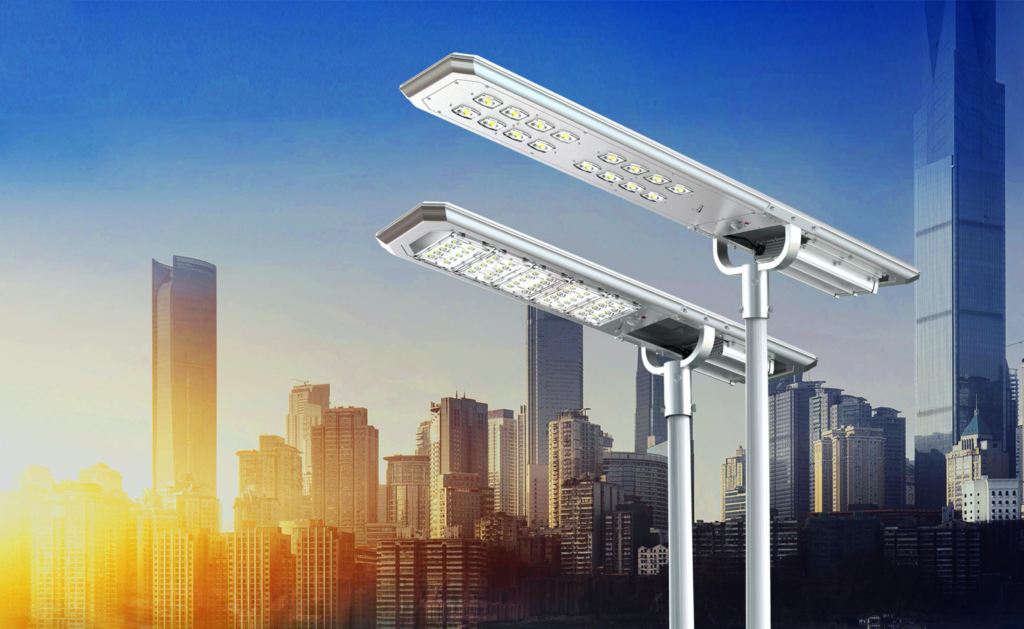Solar street lights and traditional street lights differ in their power source, installation, maintenance, environmental impact, and cost-effectiveness.
- Power Source:
- Solar Street Lights: Solar street lights are powered by energy collected from the sun through solar panels. They rely on renewable solar energy, making them eco-friendly and cost-effective in the long run.
- Traditional Street Lights: Traditional street lights are connected to the electrical grid and rely on grid-supplied electricity, which is often generated from non-renewable sources like fossil fuels.
- Installation:
- Solar Street Lights: Solar street lights are standalone systems that do not require a connection to the electrical grid. They are easier to install in areas where grid infrastructure is lacking or expensive to establish.
- Traditional Street Lights: Traditional street lights require a grid connection, which involves extensive wiring and infrastructure development. Installing traditional street lights can be costly and time-consuming.
- Maintenance:
- Solar Street Lights: Solar street lights generally have lower maintenance requirements. Routine maintenance includes cleaning the solar panels and checking for any debris or shading that might affect their efficiency.
- Traditional Street Lights: Traditional street lights may require more maintenance, including bulb replacement and electrical system inspections. Damaged or malfunctioning components can lead to higher maintenance costs.
- Environmental Impact:
- Solar Street Lights: Solar street lights are environmentally friendly because they use clean and renewable solar energy. They do not emit greenhouse gases or contribute to air pollution during operation.
- Traditional Street Lights: Traditional street lights rely on electricity generated from fossil fuels, which can result in carbon emissions and contribute to air pollution and climate change.
- Cost-Effectiveness:
- Solar Street Lights: While the initial investment for solar street lights can be higher due to the cost of solar panels and batteries, they are cost-effective in the long term because they do not incur ongoing electricity bills and have lower maintenance costs.
- Traditional Street Lights: Traditional street lights have lower upfront costs but can be more expensive over time due to ongoing electricity and maintenance expenses.
- Reliability:
- Solar Street Lights: Solar street lights can be highly reliable when properly designed and maintained. However, they may experience reduced performance during extended periods of cloudy or rainy weather.
- Traditional Street Lights: Traditional street lights are generally reliable when the grid is stable, but they can be affected by power outages or grid failures.
- Flexibility and Remote Locations:
- Solar Street Lights: Solar street lights are suitable for remote or off-grid locations where extending the electrical grid is impractical or costly.
- Traditional Street Lights: Traditional street lights are typically deployed in areas with existing grid infrastructure.
In summary, solar street lights offer numerous advantages in terms of sustainability, lower operating costs, and ease of installation in remote areas. However, they may have higher upfront costs compared to traditional street lights. The choice between the two depends on specific project requirements, budget, and environmental considerations.


